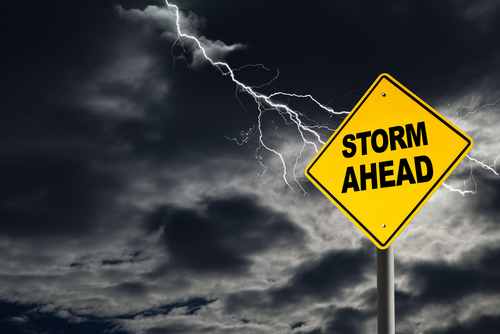As climate change progresses, we can expect storms to become more frequent and more intense. Already, coastal communities are experiencing the devastating effects of severe hurricanes and tropical storms, while midwestern communities are encountering massive destruction from tornadoes and hail. As storms only continue to worsen, ensuring our facilities are designed and built to withstand catastrophic disasters is becoming increasingly important.

Consider the six tips below to proactively improve your facilities’ resiliency against stronger storms.
1. Reinforce Your Building’s Structure
One of the best ways to protect your facilities from increasingly stronger storms is to improve the structure of your buildings as a whole. You can do this by reinforcing the walls, roof, and foundation with stronger materials such as concrete and steel. You can also install impact-resistant windows and doors.
2. Protect Your HVAC Systems
Your HVAC system is one of the most important components of your facility. Without it, your facility would be unable to function properly, and your employees would be unable to work effectively. Therefore, protecting your HVAC system from the damaging effects of storms is essential.
You can do this by installing hurricane straps to secure your HVAC units to the structure of your building. For backup power, you can install a generator to power your HVAC system in case of a power outage.
3. Install Flood Barriers
Another way to protect your facilities from increasingly strong storms is to install flood barriers. Flood barriers are designed to prevent water from entering your facility. There are a variety of different flood barrier systems available that can help protect your people and your property.
4. Optimize Your Landscaping
One way to reduce the damage caused by storms is to optimize the landscaping around your facility. You can plant trees and shrubs in strategic locations that will shield your facility from the elements or even install windbreaks for further protection.
5. Improve Your Drainage
Improving the drainage system is another key way to enhance your facility’s resiliency to storms. This means making sure your gutters and downspouts are clear and functioning properly. Additionally, consider installing a sump pump to remove any water that accumulates.
6. Stay Up-to-Date on the Latest Storm Information
One of the best ways to prepare for a storm is to stay up-to-date on the latest weather information. The National Weather Service offers a variety of resources that can help you stay informed about the latest storms. You can even sign up for alerts that will notify you when a storm is headed your way.
Improving the resiliency of our buildings and infrastructure is essential to protecting our safety and way of life. So, follow these steps to reinforce your buildings and cover up for any shortcomings you might have. After all, your people and property are important; ensure you protect them.

Dr. Denis Phares is the CEO of Dragonfly Energy Corp., a manufacturer of deep cycle lithium-ion batteries that is focused on conventional and solid-state lithium-ion battery research and development worldwide.
